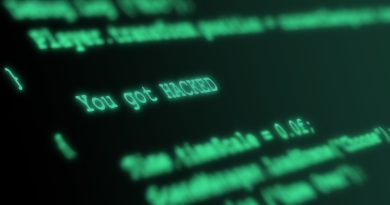Video: Journal of Cyber Security and Mobility Best Paper 2022 with Roman Yampolskiy
River Publishers has announced the best paper of 2022 for the Journal of Cyber Security and Mobility, which was awarded
Read More
River Publishers has announced the best paper of 2022 for the Journal of Cyber Security and Mobility, which was awarded
Read More
Name: David SoldaniAffiliation: Rakuten Can you briefly introduce your current role in cybersecurity? Areas of my responsibility and expertise include,
Read More
APIs (Application Programming Interfaces) are gradually becoming critical aspects of software interaction and integration over the internet, allowing fast and
Read More
If you are a software supplier and your customer is covered by the EU NIS2 directive, you might very well
Read More
It’s -30 Celsius in December. An entire city has gone dark. There is no electricity, heating, internet, or telecommunications—all because of one malicious email that now holds the city ransom for its data in exchange for some bitcoins. The truly alarming prospect is that this nightmarish scenario can hit any and every major city globally. In a race to digitally transform businesses, institutions, and governments cannot ignore these Trojan horses that have the potential to bring them to their knees. With data being touted as the new oil, it takes a proactive strategy to keep any organization’s wealth of stored data well protected, yet accessible, to the internal networks that need it. This has sparked tech giants like Apple, Google, IBM, and Amazon to offer cybersecurity solutions and rev their market ad campaigns on data, privacy, and security amidst waves of digital transformation. The fact is, for any element of a business to transform with new technology, that technology must be backed by an equally transformed security posture. Without it, vital data is put at risk. For organizations to successfully transform to meet standards set by today’s tech leaders, it requires fundamental knowledge of what cybersecurity is and what it isn’t.
Read More
Technology is ever on the march to the future and with it comes more sophisticated and persistent cybercriminals.The digital arms
Read More
Cybercriminals are increasingly hacking industrial control systems to profit off the widespread adoption of new technologies with weak cybersecurity. Industry
Read More
Name: Kirsty Paine Affiliation: Splunk Can you briefly introduce your current role in cybersecurity? As Strategic Advisor in Technology &
Read More
Digital forensics and incident response (DFIR) are a routine part of ensuring the business has a good security posture. Investigations
Read More
Firmware security risks One of the most neglected areas of cyber security is the firmware that underpins every device –
Read More